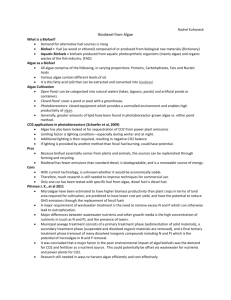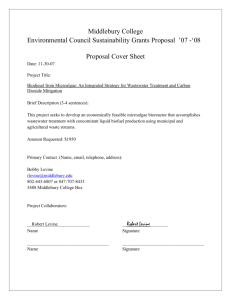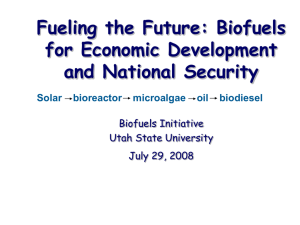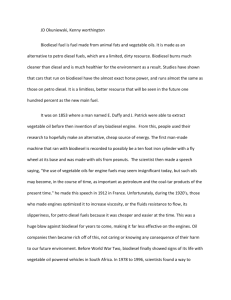The Energy Crisis in America
advertisement
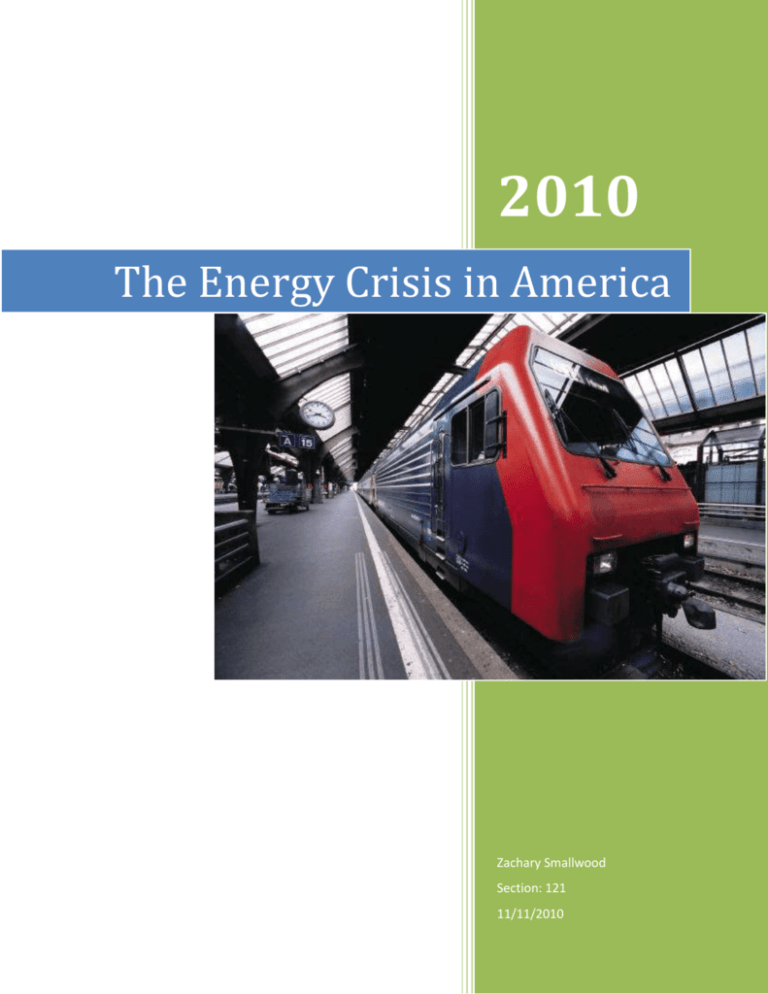
2010 The Energy Crisis in America Zachary Smallwood Section: 121 11/11/2010 1 There is a major energy crisis in this country and I’d like to begin with the actual problem. The United States demand for energy continues to increase daily. We need energy to travel, power our factories, cook and even warm our homes. In the United States we have two major sources of energy, oil and coal. Coal comes from fossils that when turned into energy damages the ozone of this planet and is not a renewable source, once we run out its done. We will no longer be able to rely on that for energy. Oil is also non renewable and we are slowly drilling and pumping it all out of the ground and using it to power our lives. Most economists believe we are close to peaking in the amount of crude oil left in the world. We have already had a test run on the effects of diminishing oil from 2008. Oil was not being produced as quickly as we were demanding it. Robert Hirsch quoted a GAO report saying “an imminent peak and sharp decline in oil production could cause a worldwide recession.” 2 Utah’s Oil Prices Product Domestic/Crude Oil Retail/Regular Gasoline per Gallon Retail/Diesel per Gallon Utah $80,840 $2.498 U.S. $87,060 $2.545 n/a $2.798 There are a lot of things that this country can do to address the energy crisis we face today. I was fortunate enough to watch two documentaries “Fuel” by Joshua Tickell and “A Crude Awakening: the Oil Crash” by Basil Gelpke and Ray McCormack. The movie “Fuel” had a lot of great ideas for fixing the energy crisis in this country. I’m going to go through a few that were presented in “Fuel” and provide their pros and cons. I will be going through a few different topics in this paper of alternatives to fossil fuels. 1) Biodiesel 2) Nuclear Power 3) Wind Power 4) Algae as biofuel Biodiesel Biodiesel was at one time thought to be the greatest alternative to crude oil. Biodiesel is “the name of a clean burning alternative fuel, produced from domestic, renewable resources. Biodiesel contains no petroleum, but it can be blended at any 3 level with petroleum diesel to create a biodiesel blend. It can be used in compressionignition (diesel) engines with little or no modifications. Biodiesel is simple to use, biodegradable, nontoxic, and essentially free of sulfur and aromatics” (What is Biodiesel?). Using biodiesel was thought to be a better alternative to crude oil because it’s better for the environment and we could grow and use it here in America, such as soybeans and corn ethanol. However, biodiesel is doing exactly the opposite of what its supporters wanted. It’s causing accelerated global warming that is hurting the world in the name of saving it. “Meanwhile, by diverting grain and oilseed crops from dinner plates to fuel tanks, biofuels are jacking up world food prices and endangering the hungry. The grain it takes to fill an SUV tank with ethanol could feed a person for a year. Harvests are being plucked to fuel our cars instead of ourselves” (Grunwald). This caused a lot of supporters to jump off the biodiesel wagon and continue their search for a better renewable energy source. Gasoline Price Diesel Price November ’10 $2.86 November ’10 $3.11 Nuclear Power Nuclear power was, and some say still is, a very large contender to become the alternative to fossil fuels. “Worldwide, about 440 plants now generate 16 percent of the planet's electric power, and some countries have gone heavily nuclear. France, for instance, gets 78 percent of its electricity from fission” (Parfit). This was thought to be a 4 great alternative because of abundant power, no blots on the landscape except for containment domes and no carbon emissions. China is currently facing shortages of power and has started to build new nuclear reactors at a fast pace. The major problems with nuclear energy stem from two sources, economics and safety. Economic opponents of nuclear power say that the cost of building nuclear power plants is too high, that the parts and labor of such buildings are unusually steep in cost. Most of this can be changed though with loan guarantees and other federal incentives. As more nuclear plants get built the more demand for parts and labor become and this will naturally drive down the price. “NRG Energy Inc., based in Princeton, N.J., has filed an application to build a reactor adjacent to an existing plant in Texas. Though it's too early to know how much the plant will eventually cost – or even if it ultimately will get built – high natural-gas prices alone are enough to justify construction, according to NRG” (Totty). The other problem opponents say is safety. People are doubtful because of the tragic explosion at a Chernobyl plant in Ukraine in 1986 and the accident on Three Mile Island in 1979. The United States has taken precautions against future accidents, now relying more on gravity than pipes and pumps to move the cool water to the hot nuclear core. Even if there were a serious accident the nuclear plants are designed to make sure radiation does not spill out. Chernobyl lacked these safety features such as a massive reinforced concrete structure with walls that were as much as four feet thick. “Furthermore, look at safety more broadly – from an environmental perspective. The death and destruction stemming from global warming far exceed what is likely to happen if there is a nuclear accident. And yet, when we talk about safety, we seem to focus only on the risks of nuclear power” (Totty, 2008). 5 Wind Energy Wind powered energy can be either very powerful or extremely weak. Wind is warmed air by the sun and in theory is just another way of collecting solar energy. One wind turbine can produce up to two megawatts. Europe is currently having a huge wind energy boom, producing about 35,000 megawatts which equals about 35 coal fired power plants. The United States which has a huge potential for wind energy production is second, next to Europe, with only 7,000 megawatts. Utah, for instance, only produces about 19 megawatts or 0.3% of the state’s total energy production through wind turbines (n.d.). Some people do not like the aesthetic look to wind turbines and do not want the look on their “scenic” parts of the country. “There are other challenges. Like sailboats, wind turbines can be becalmed for days. To keep the grid humming, other sources, such as coal-fired power plants, have to stand ready to take up the slack. But when a strong wind dumps power into the grid, the other generators have to be turned down, and plants that burn fuel are not quickly adjustable. A wind-power bonanza can become a glut. Denmark, for example, is sometimes forced to unload power at uneconomic rates to neighbors like Norway and Germany” (Parfit, 2008). The plus side to wind power and the same for solar power is that they are both able to be put into residential homes as they can be made on a smaller scale and can be more portable to the users. When the energy is not being used, it can be fed back into 6 the power grid for another person to use. From a capitalist point of view this is definitely a great way to make some money if you live in a fairly breezy place. Algae as a Biofuel One of the most exciting remedies for the energy crisis to me is another form of biofuel called Algae. Algae are a large and diverse simple, group of typically autotrophic organisms. They are mostly made up of unicellular and multicellular forms. Seaweed is a common type of Algae. Algae as a biofuel has really started to pick up. ExxonMobil, in partnership with Synthetic Genomics, Inc., is researching the benefits of algae bio-oil and determining if it is a viable solution to the energy crisis. In July 2010 ExxonMobil announced they were expanding their research and opened a new green house facility in La Jolla, California. This greenhouse will allow Exxon and SGI to examine the different types of growth of algae say in an open pond setting and closed photobioreactors. They would like to see how both natural and engineered strains react when under different lighting, climate and fed different nutrients. “Since ExxonMobil 7 and SGI announced the algae biofuel program last July, researchers have made substantial progress, including: Isolating and/or engineering a large number of candidate algal strains and developing growth conditions under which these strains could be made more productive; Identifying and testing some of the preferred design characteristics of the different production systems; and Initiating life cycle and sustainability studies to assess the impact of each step in the process on greenhouse gas emissions, land use and water use” (Algae biofuels, n.d.). Some of the benefits to algal bio-oil are; algae are easy to grow using land and water that is normally unsuitable for food and normal plant growth. There are select species of Algae that produce bio-oil through photosynthesis. Large quantities of algae can be grown rapidly which makes it easier to test different strains for quick production. If this testing proves to be a success, algae bio oil would be able to produce gasoline, diesel and jet fuel that meet the same requirements as oil. 8 Laws that can be changed to reflect better energy standards These are all alternatives to remedy the problems with our energy crisis in America. In addition to these alternatives there should be incentives for the United States to be a leader in developing alternative energy. The tariff on ethanol should be repealed. Due to high gasoline prices food prices are skyrocketing due to the production, transporting and processing of foods. Eliminating this tariff would allow a higher demand than just as a blending agent for gasoline. Through a loophole oil companies are able to import ethanol by the thousands of gallons without having to pay the 54 cent tariff. The department of energy’s clean coal research should be shut down. For decades there has been research supported by every president since Ronald Reagan. This has been a costly and unproductive exercise for the taxpayer’s point of view. This research is trying to find ways to burn coal cleanly. I don’t believe that taxpayers or environmental groups approve of spending tax payer money; it is time to focus on a renewable source of energy. With these alternatives to using oil and coal as our primary energy resource and with the removal the laws I provided. The two most important methods of alternative energy to me are wind and using algae. Wind would be able to be installed in almost every home in the nation along with solar power we’d be able to practically supply our own energy. Algae bio-fuel is something that is very early in the energy game but from what I have shown I believe it is as promising as wind and solar. I think that we would 9 be a more sustainable and livable country for everyone and safeguard the planet for future generations. 10 Bibliography Grunwald, Michael. The Clean Energy Scam. New York City: Time Publishing, 2010. n.d. "Utah Renewable Electricity." n.d. Parfit, Michael. Powering the Future. 2008. 3 November 2010 <http://ngm.nationalgeographic.com/ngm/0508/feature1/fulltext.html>. Totty, Michael. The Case for and Against Nuclear Power. 3 November 2010 <http://online.wsj.com/article/SB121432182593500119.html>. What is Biodiesel? 11 November 2010 <http://www.biodiesel.org/resources/biodiesel_basics/>.

